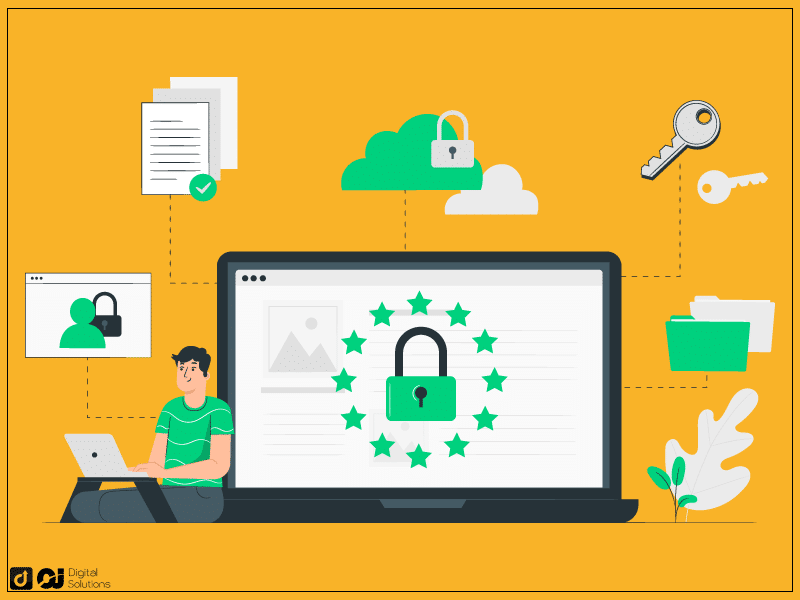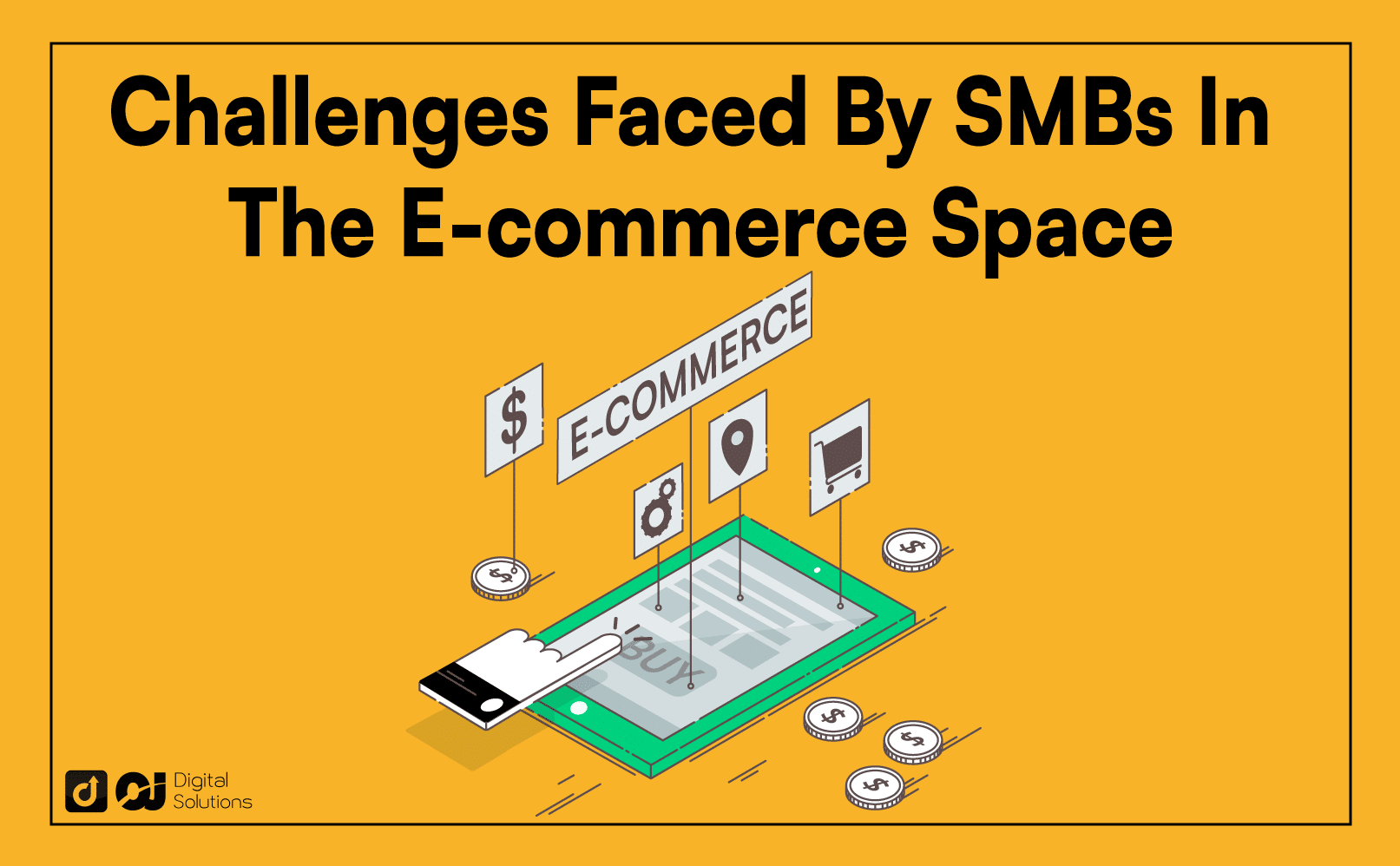The e-commerce world has revolutionized how businesses operate, providing opportunities for entrepreneurs and small and medium-sized businesses (SMBs) to reach a global customer base.
However, despite the advantages of the e-commerce space, SMBs face numerous challenges that can hinder their success.
In this article, we will explore some of the key challenges faced by SMBs in the e-commerce space and discuss strategies to overcome them.
Let’s begin.
What are SMBs?
SMBs, also known as small and medium-sized enterprises, play a crucial role in the economy by driving innovation, creating jobs, and fostering competition.
In the e-commerce space, these businesses leverage digital platforms to sell products and services to customers worldwide.
However, they encounter unique obstacles that are important to address for their sustainable growth and survival.
What are the SMB Challenges in the e-Commerce Space?
Here are some of the most typical problems online merchants encounter nowadays and what to do about them.
Cyber Security

Policies and procedures are needed to develop a sound cybersecurity framework for small businesses that specialize in eCommerce.
Each sale is crucial to the survival of a small firm in the face of a cyberattack because of the slim profit margins.
Because a small company relies on that revenue, business owners need the correct cybersecurity framework to keep data safe and secure while empowering staff to create policies and technology to resist cyberattacks.
Tighter access control and data security software may strengthen defenses against vulnerabilities and reduce the cybersecurity risks of a small firm.
Businesses must have an incident response strategy in place that outlines what to do in the case of a cyberattack.
Having a plan in place might help your company minimize lost revenue and keep clients serviced in the meantime.
Order Fulfillment
Not everything needs to fall on the shoulders of the small company owner. You may be swamped with more orders than you can manage alone.
Outsourcing order fulfillment and eCommerce delivery to a company like First Mile in this situation may reduce your effort and improve the customer experience.
Consider employing drop shippers and third-party logistics providers (3PLs) to increase delivery volume without investing in more storage space if you sell big or heavy items.
Customer Satisfaction

As an eCommerce shop, you may find it difficult to provide your consumers the same level of service they would get in a physical shop.
When businesses make the transition to selling online, pricing and targeting certain demographics of customers are often overlooked.
Customer experience is essential when launching an eCommerce initiative because your clients expect to be treated as well as or better online as they are face to face.
Businesses need more accurate pricing, analytics, and client segmentation to satisfy these new needs.
Successful eCommerce experiences need the same, if not more, clarity in product offers, pricing, loyalty programs, and other areas necessary for a face-to-face purchasing transaction.
Customer retention techniques include concentrating on customer expectations, receiving and responding to customer feedback, and being open to online and in-person improvement.
High-Quality Website Traffic And Conversion

Building, creating, and administering an eCommerce website is difficult, but producing quality conversions is much more difficult.
To convert traffic into customers, you must have a clean, modern, genuine, easy to use, and virus-free website. Because every industry is unique, understanding your audience is critical to designing a website that resonates with them.
However, creating an excellent company website is just the beginning. The second crucial step is to optimize your content using SEO.
Worldwide average conversion rates are less than 3%, making getting relevant site visitors challenging.
Extensive short-tail keyword research should be conducted to ensure that you are optimizing your pages for relevant search terms.
It is likely that the competition for these terms will not realize immediate web traffic when [they] are just starting; therefore, you need to do some long-tail keyword research to learn the “what,” “how,” “who,” and “where” of your area of expertise.
The belief that “if I build my online store, customers will somehow discover it” was common among businesses in the past. That is no longer the case today.
They may have been able to depend on a stumble-upon effect when there were fewer eCommerce sites, but the internet is today too busy and loud.
As a result, engaging customers and capturing their attention must be more relevant and effective.
To compete in the loud eCommerce industry, eCommerce SMBs need to identify who they are targeting to build a client base that will be a consistent source of income and loyal customers.
Utilize analytics to find demographic patterns that provide you additional information on your audience, such as which social media sites they utilize, to serve your client base better.
Visibility
How will you generate quality traffic to your site and convert visitors into customers if they can’t discover it?
It’s a huge problem for e-commerce enterprises, and it has the potential to make or ruin a company.
It’s unlikely that potential customers will find your website if it doesn’t appear on the first page of Google’s search results for relevant keywords.
Investing in SEO is the best way to overcome this challenge.
E-commerce businesses should undertake keyword research, apply best practices for on-page SEO, and concentrate on creating high-authority connections to their website.
If all of the above is done properly, it will improve search exposure and lead creation.
Understanding your audience is critical to determining which marketing channel will generate traffic that converts into sales. If you are selling fashionable outfits influencer marketing is among the best options.
However, if your e-commerce business is based around a product that solves a problem, getting your website to rank on Google for related keywords through SEO efforts might be your best bet.
Optimize your website for mobile devices to increase your Google SEO ranking. Google considers mobile page load to be an essential measure.
Refund and Return Policies

A reasonable return and refund policy may be the difference between success and failure. That may seem excessive, yet it is true.
If you want your brand to stand tall, customer satisfaction should be your top priority, and whatever you’re selling should be the same as what’s advertised.
In a perfect world, there would be no problems with the goods you sell, but this isn’t always the case. Sometimes the consumer has buyer’s remorse if the item is not what they expected.
Be open, and create an easy, fast, and smooth return policy. Make it simple to understand and not too complicated, so the customer does not have to go through the hassle of returning an item.
People are less inclined to believe you’re selling anything worthwhile if you don’t have a decent return and refund policy.
When a website says ‘no returns or refunds,’ the customer is more likely to believe it’s a risky purchase or, worse, a scam because online businesses are less well-known.
Creating and Expanding Sales
Making sales is the next stage after determining your items, establishing your website, and developing your small company marketing strategy.
Creating a sales strategy and selling your goods and services may seem a no-brainer; nevertheless, it is not always that simple.
SMBs must have the right product at the right price and be top of mind when a customer is ready to purchase. This traffic can be difficult to obtain; to drive sales, a brand must endear itself to their customers.
Aside from clients remembering you when they need something and being enthusiastic about your goods, your website significantly impacts how many sales you’ll earn.
Internet of Things Commerce
IoT commerce has become a popular means for customers to make digital purchases using IoT devices such as smart speakers, vehicles, appliances, and other smart gadgets.
Business owners may expedite product distribution to additional channels in the present API economy.
To meet this new form of purchasing, e-commerce enterprises must prioritize their PIM to react to API queries and sell via unorthodox channels.
FAQs
How Can SMBs Secure Funding for their e-Commerce Ventures?
SMBs can explore alternative financing options such as crowdfunding or partnerships with investors who believe in their vision. They can also seek assistance from government programs or grants tailored for small businesses.
How Can SMBs Differentiate Themselves from Larger E-Commerce Players?
SMBs can focus on providing personalized customer experiences, niche products or services, and leveraging their agility and ability to adapt quickly to market demands.
What are Some Effective Marketing Strategies for SMBs in the e-commerce
SMBs can utilize social media marketing, content marketing, influencer collaborations, and targeted advertising to reach their desired audience and promote their products or services.
How Can SMBs Protect Customer Data from Cyber Threats?
Implementing robust cybersecurity measures such as firewalls, encryption, and secure payment gateways can help protect customer data. Regular security audits and employee training are also essential.
How Can SMBs Stay Updated on Changing Technology Trends?
SMBs can subscribe to industry newsletters, participate in relevant conferences and events, and engage with technology experts and communities to stay informed about the latest trends and innovations.
Bottom Line
SMBs play a vital role in the e-commerce space, offering unique products and services while driving innovation and competition.
However, they face numerous challenges that can hinder their growth and success.
By addressing these challenges head-on and implementing effective strategies, SMBs can overcome the obstacles and thrive in the e-commerce landscape.




